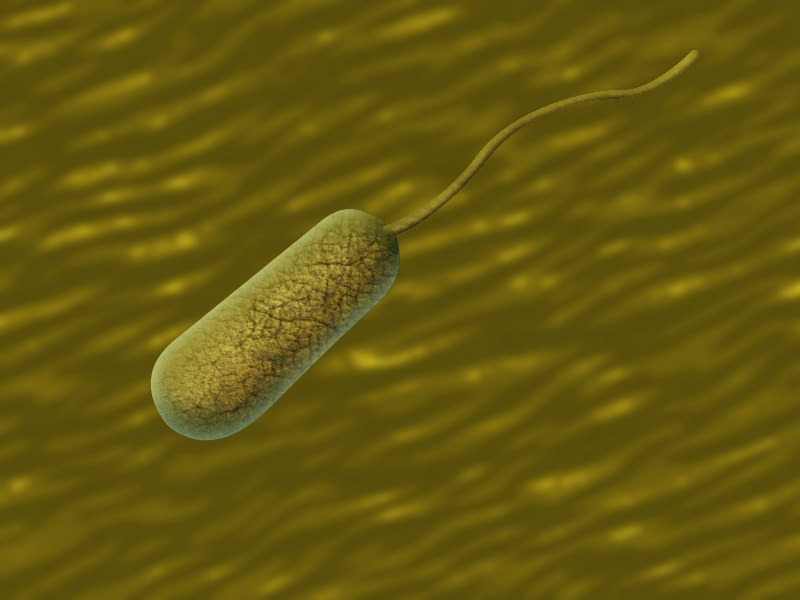7.9: Procariotas
- Page ID
- 108583
\( \newcommand{\vecs}[1]{\overset { \scriptstyle \rightharpoonup} {\mathbf{#1}} } \)
\( \newcommand{\vecd}[1]{\overset{-\!-\!\rightharpoonup}{\vphantom{a}\smash {#1}}} \)
\( \newcommand{\dsum}{\displaystyle\sum\limits} \)
\( \newcommand{\dint}{\displaystyle\int\limits} \)
\( \newcommand{\dlim}{\displaystyle\lim\limits} \)
\( \newcommand{\id}{\mathrm{id}}\) \( \newcommand{\Span}{\mathrm{span}}\)
( \newcommand{\kernel}{\mathrm{null}\,}\) \( \newcommand{\range}{\mathrm{range}\,}\)
\( \newcommand{\RealPart}{\mathrm{Re}}\) \( \newcommand{\ImaginaryPart}{\mathrm{Im}}\)
\( \newcommand{\Argument}{\mathrm{Arg}}\) \( \newcommand{\norm}[1]{\| #1 \|}\)
\( \newcommand{\inner}[2]{\langle #1, #2 \rangle}\)
\( \newcommand{\Span}{\mathrm{span}}\)
\( \newcommand{\id}{\mathrm{id}}\)
\( \newcommand{\Span}{\mathrm{span}}\)
\( \newcommand{\kernel}{\mathrm{null}\,}\)
\( \newcommand{\range}{\mathrm{range}\,}\)
\( \newcommand{\RealPart}{\mathrm{Re}}\)
\( \newcommand{\ImaginaryPart}{\mathrm{Im}}\)
\( \newcommand{\Argument}{\mathrm{Arg}}\)
\( \newcommand{\norm}[1]{\| #1 \|}\)
\( \newcommand{\inner}[2]{\langle #1, #2 \rangle}\)
\( \newcommand{\Span}{\mathrm{span}}\) \( \newcommand{\AA}{\unicode[.8,0]{x212B}}\)
\( \newcommand{\vectorA}[1]{\vec{#1}} % arrow\)
\( \newcommand{\vectorAt}[1]{\vec{\text{#1}}} % arrow\)
\( \newcommand{\vectorB}[1]{\overset { \scriptstyle \rightharpoonup} {\mathbf{#1}} } \)
\( \newcommand{\vectorC}[1]{\textbf{#1}} \)
\( \newcommand{\vectorD}[1]{\overrightarrow{#1}} \)
\( \newcommand{\vectorDt}[1]{\overrightarrow{\text{#1}}} \)
\( \newcommand{\vectE}[1]{\overset{-\!-\!\rightharpoonup}{\vphantom{a}\smash{\mathbf {#1}}}} \)
\( \newcommand{\vecs}[1]{\overset { \scriptstyle \rightharpoonup} {\mathbf{#1}} } \)
\( \newcommand{\vecd}[1]{\overset{-\!-\!\rightharpoonup}{\vphantom{a}\smash {#1}}} \)
\(\newcommand{\avec}{\mathbf a}\) \(\newcommand{\bvec}{\mathbf b}\) \(\newcommand{\cvec}{\mathbf c}\) \(\newcommand{\dvec}{\mathbf d}\) \(\newcommand{\dtil}{\widetilde{\mathbf d}}\) \(\newcommand{\evec}{\mathbf e}\) \(\newcommand{\fvec}{\mathbf f}\) \(\newcommand{\nvec}{\mathbf n}\) \(\newcommand{\pvec}{\mathbf p}\) \(\newcommand{\qvec}{\mathbf q}\) \(\newcommand{\svec}{\mathbf s}\) \(\newcommand{\tvec}{\mathbf t}\) \(\newcommand{\uvec}{\mathbf u}\) \(\newcommand{\vvec}{\mathbf v}\) \(\newcommand{\wvec}{\mathbf w}\) \(\newcommand{\xvec}{\mathbf x}\) \(\newcommand{\yvec}{\mathbf y}\) \(\newcommand{\zvec}{\mathbf z}\) \(\newcommand{\rvec}{\mathbf r}\) \(\newcommand{\mvec}{\mathbf m}\) \(\newcommand{\zerovec}{\mathbf 0}\) \(\newcommand{\onevec}{\mathbf 1}\) \(\newcommand{\real}{\mathbb R}\) \(\newcommand{\twovec}[2]{\left[\begin{array}{r}#1 \\ #2 \end{array}\right]}\) \(\newcommand{\ctwovec}[2]{\left[\begin{array}{c}#1 \\ #2 \end{array}\right]}\) \(\newcommand{\threevec}[3]{\left[\begin{array}{r}#1 \\ #2 \\ #3 \end{array}\right]}\) \(\newcommand{\cthreevec}[3]{\left[\begin{array}{c}#1 \\ #2 \\ #3 \end{array}\right]}\) \(\newcommand{\fourvec}[4]{\left[\begin{array}{r}#1 \\ #2 \\ #3 \\ #4 \end{array}\right]}\) \(\newcommand{\cfourvec}[4]{\left[\begin{array}{c}#1 \\ #2 \\ #3 \\ #4 \end{array}\right]}\) \(\newcommand{\fivevec}[5]{\left[\begin{array}{r}#1 \\ #2 \\ #3 \\ #4 \\ #5 \\ \end{array}\right]}\) \(\newcommand{\cfivevec}[5]{\left[\begin{array}{c}#1 \\ #2 \\ #3 \\ #4 \\ #5 \\ \end{array}\right]}\) \(\newcommand{\mattwo}[4]{\left[\begin{array}{rr}#1 \amp #2 \\ #3 \amp #4 \\ \end{array}\right]}\) \(\newcommand{\laspan}[1]{\text{Span}\{#1\}}\) \(\newcommand{\bcal}{\cal B}\) \(\newcommand{\ccal}{\cal C}\) \(\newcommand{\scal}{\cal S}\) \(\newcommand{\wcal}{\cal W}\) \(\newcommand{\ecal}{\cal E}\) \(\newcommand{\coords}[2]{\left\{#1\right\}_{#2}}\) \(\newcommand{\gray}[1]{\color{gray}{#1}}\) \(\newcommand{\lgray}[1]{\color{lightgray}{#1}}\) \(\newcommand{\rank}{\operatorname{rank}}\) \(\newcommand{\row}{\text{Row}}\) \(\newcommand{\col}{\text{Col}}\) \(\renewcommand{\row}{\text{Row}}\) \(\newcommand{\nul}{\text{Nul}}\) \(\newcommand{\var}{\text{Var}}\) \(\newcommand{\corr}{\text{corr}}\) \(\newcommand{\len}[1]{\left|#1\right|}\) \(\newcommand{\bbar}{\overline{\bvec}}\) \(\newcommand{\bhat}{\widehat{\bvec}}\) \(\newcommand{\bperp}{\bvec^\perp}\) \(\newcommand{\xhat}{\widehat{\xvec}}\) \(\newcommand{\vhat}{\widehat{\vvec}}\) \(\newcommand{\uhat}{\widehat{\uvec}}\) \(\newcommand{\what}{\widehat{\wvec}}\) \(\newcommand{\Sighat}{\widehat{\Sigma}}\) \(\newcommand{\lt}{<}\) \(\newcommand{\gt}{>}\) \(\newcommand{\amp}{&}\) \(\definecolor{fillinmathshade}{gray}{0.9}\)
¿Cuáles son los organismos más numerosos del planeta?
Bacterias. Y todo lo que se necesita es uno para crecer rápidamente, bajo las condiciones justas, en millones y miles de millones. Por suerte, sabemos controlar las bacterias cuando es necesario. Pero las bacterias sí sirven para muchos propósitos importantes. De hecho, no podríamos sobrevivir sin ellos.
Evolución de los procariotas
Sin duda has tenido dolor de garganta antes, y probablemente hayas comido queso o yogur. Si es así, entonces te has encontrado con el fascinante mundo de los procariotas. Los procariotas son organismos unicelulares que carecen de núcleo. También carecen de otros orgánulos unidos a membrana. Los procariotas son diminutos y a veces molestos, pero son los organismos más numerosos de la Tierra. Sin ellos, el mundo sería un lugar muy diferente. Los procariotas son los organismos más simples. Las primeras células y organismos en evolucionar serían clasificadas como procariotas.
Los procariotas se encuentran actualmente ubicados en dos dominios. Un dominio es el taxón más alto, justo por encima del reino. Los dominios procariotas son Bacterias y Archaea (ver Figura a continuación). El tercer dominio es Eukarya. Incluye a todos los eucariotas. A diferencia de los procariotas, los eucariotas tienen un núcleo en sus células.

No está claro cómo se relacionan los tres dominios. Alguna vez se pensó que las arqueas eran ramificaciones de bacterias que se adaptaron a ambientes extremos. Por su parte, las Bacterias fueron consideradas ancestros de Eukarya. Los científicos ahora saben que Archaea comparte varios rasgos con Eukarya que las bacterias no comparten (ver Tabla a continuación). ¿Cómo se puede explicar esto? Una hipótesis es que Eukarya surgió cuando una célula arqueica se fusionó con una célula bacteriana. Las dos células se convirtieron en el núcleo y el citoplasma de una nueva célula eucariana. ¿Qué tan bien se ajusta esta hipótesis a la evidencia en la Tabla a continuación?
| Característica | Bacterias | Archaea | Eukarya |
|---|---|---|---|
| Flagelos | Único para Bacterias | Único en Archaea | Único en Eukarya |
| Membrana Celular | Único para Bacterias | Como Bacterias y Eukarya | Único en Eukarya |
| Síntesis de Proteínas | Único para Bacterias | Como Eukarya | Como Archaea |
| Intrones | Ausente en la mayoría | Presente | Presente |
| Péptidoglicano (en la pared celular) | Presente | Ausente en la mayoría | Ausente |
Resumen
- Los procariotas incluyen Bacterias y Archaea. Un procariota individual consiste en una sola célula sin núcleo.
- Las bacterias viven en prácticamente todos los ambientes de la Tierra.
- Las arqueas viven en todas partes de la Tierra, incluidos los ambientes extremos.
Revisar
- ¿Qué son los procariotas?
- ¿Cuáles son las dos diferencias principales entre Bacterias y Archaea?
| Imagen | Referencia | Atribuciones |
 |
[Figura 1] | Crédito: Usuario:Adenosina/Wikimedia Commons; Zachary Wilson Fuente: Fundación CK-12 Licencia: CC BY-NC 3.0 |
 |
[Figura 2] | Crédito: Zachary Wilson Fuente: Fundación CK-12 Licencia: CC BY-NC 3.0 |

